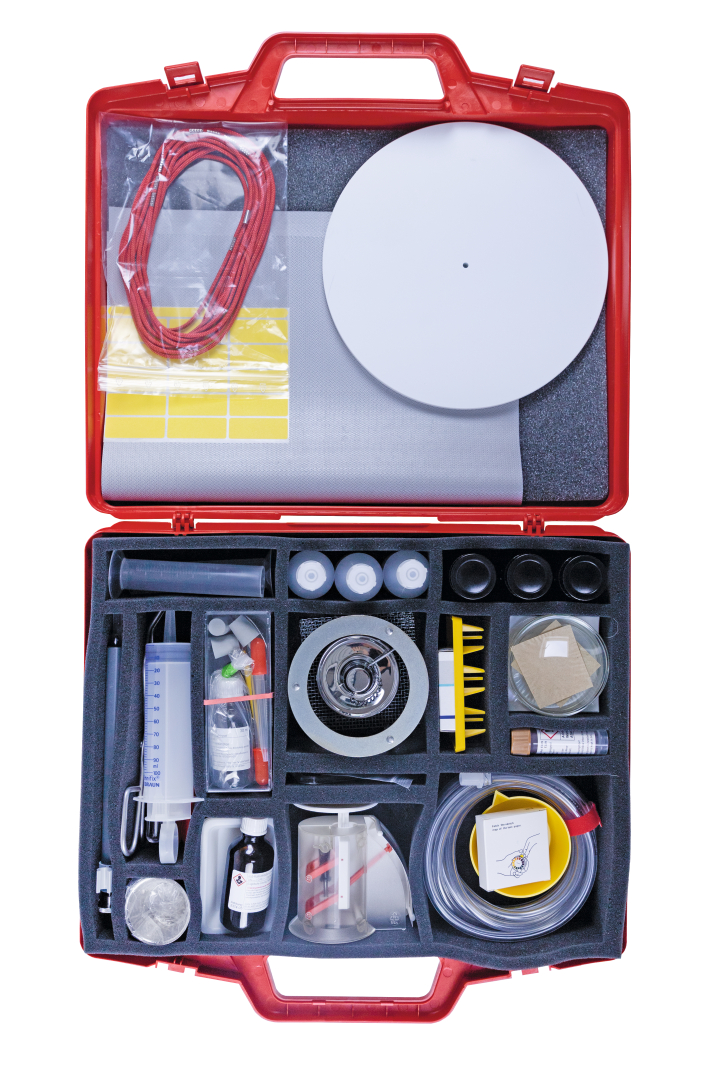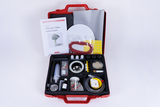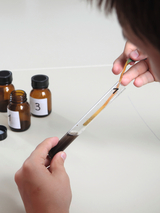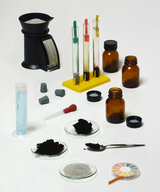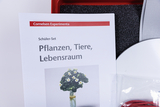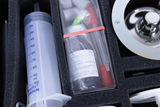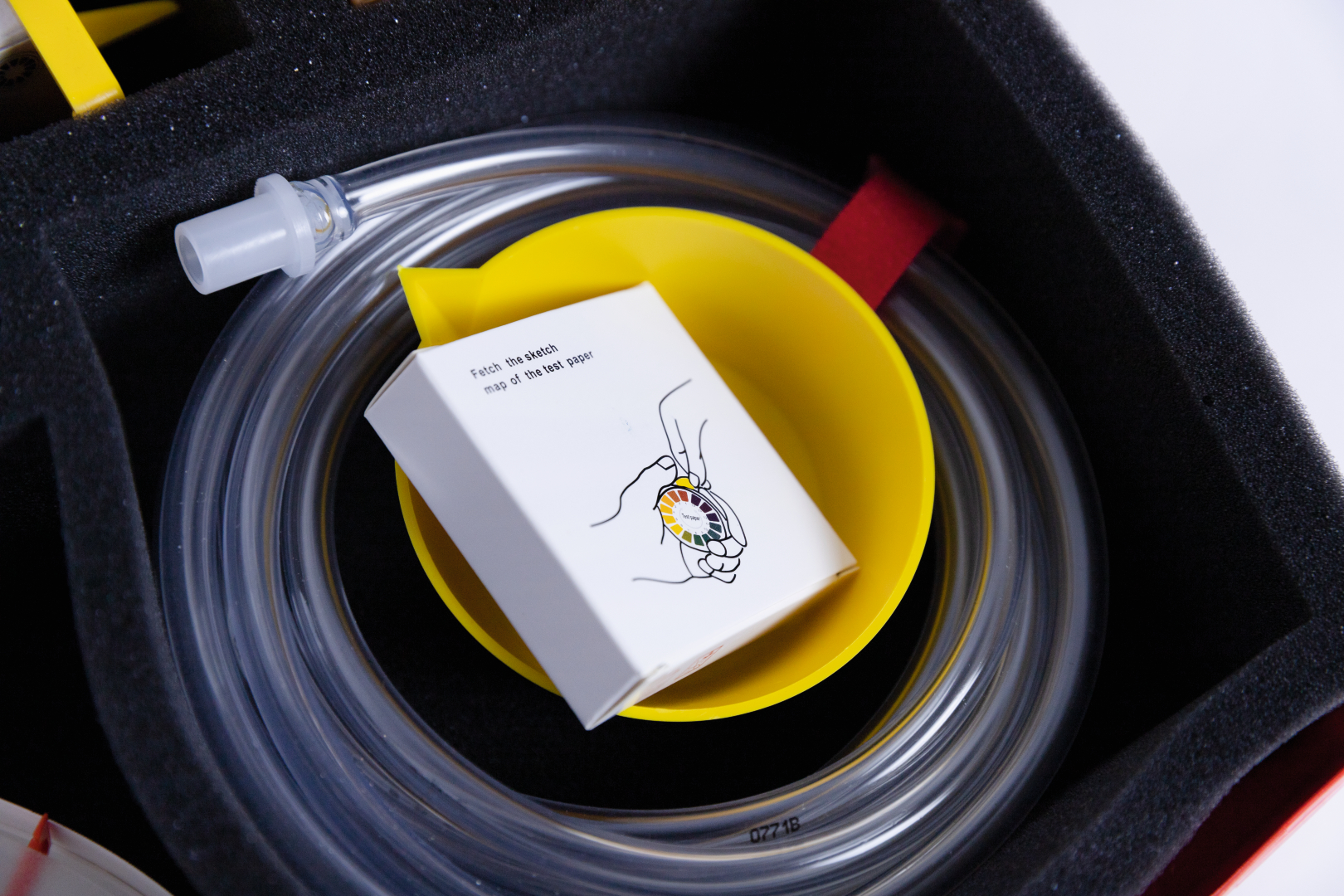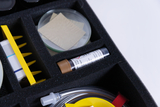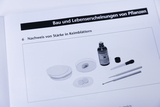Students kit Plants, animals, habitats
This kit contains equipment and resources for scientific experiments covering multiple disciplines to investigate the living conditions of plants and microscopic creatures.
Multiple experiments and observations can be carried out to investigate the processes and conditions upon which the emergence and prosperity of plant and animal life depend.
Age 11-14
Materials for 1 work group or demonstration
Students examine a flower.
The students investigate the water uptake of roots.
We will shortly provide you with a description of the experiment at this point.
Root hairs are observed here.
The germination trays are filled to ¾ with soil. In each tray, 10 cress seeds are placed at some distance from each other, pressed on and only lightly covered with a little soil. The students now observe the germination trays for 5 days.
Die Schüler*innen ermitteln mit einer Senkschnur die Sichttiefe von Gewässern.
Die Schüler*innen untersuchen verschiedene bodenproben und finden die prägnanten Merkmale heraus.
Die Schüler*innen ermitteln den Kalkgehalt von Bodenproben.
Da bei diesem Versuch Salzsäure eingesetzt wird, sollte dieser Versuch ausschließlich als Lehrerversuch durchgeführt werden! Die entsprechenden Arbeitsschutzbestimmungen sind unbedingt einzuhalten.
Two flower sprouts are placed in two measuring cylinders with water. One of the waters is clear and the other is dyed with colorant. The students can now observe what changes in the flowers.
Students examine dry bean seeds and bean seeds soaked in water.
We will shortly provide you with a description of the experiment at this point.
The students place bean seeds in a double bowl filled with water. They can then observe the 6 stages of the germination process.
Die Schüler*innen entnehmen von drei verschiedenen Orten (zum Beispiel Wald, Feld, Schulhof) mit dem Löffel trockene Bodenproben und füllen sie jeweils in eine Glasflasche. Sie untersuchen die getrennten Bodenbestandteile nach Korngrößen.
We will shortly provide you with a description of the experiment at this point.
Die Schüler*innen ermitteln den pH-Wert von verschiedenen Bodenproben.
Die Schüler*innen untersuchen die Bodenproben auf Lebewesen und halten in einer Tabelle fest, welche Lebewesen sie entdeckt haben.
- 2 × Dropping pipette, plastic
- 1 × Colouring agent, red for lab use only
- 1 × Plastic box 140/50/35 mm
- 1 × Metal spoon, 138 mm
- 4 × Plastic dish 95x62x20 mm
- 1 × Heat protection gauze
- 1 × Metal crucible 50mmØ
- 1 × Tripod stand
- 1 × Syringe, 100 ml
- 1 × Triple lens magnifier
- 1 × Dissecting needle, 140 mmstraight with cap
- 1 × Forceps, blunt 105 mm stainless
- 1 × Knife
- 3 × Plastic test tube, 152 mm
- 1 × Test tube stand, plastic
- 1 × Double dish,plastic 80 mm
- 1 × Plastic dish, 80 mm Ø
- 1 × Vegetable oil, 30 ml
- 1 × Foam insert for 22024 426x325x65 mm
- 1 × Viewing disc
- 1 × Storage box, red 430x330x99 mm
- 1 × Carton for storage box, 481x425x107
- 1 × Foam insert grey, 430x320x10 mm
- 3 × Watch glass, 80 mm
- 1 × Filter paper, circular 70 mmØ, 100 pcs.
- 3 × Flask, PE, narrow neck 50 ml
- 3 × Rubber stopper 18/14 mm
- 2 × Measuring cylinder, PP, 25 ml
- 1 × Crucible tongs, stainless
- 1 × Spirit burner, metal
- 1 × Watesmo-test, 1 roll
- 1 × Indicator paper universalpH 1-14, 1 roll
- 3 × Glass bottle, brown, wideneck, 50 ml
- 1 × Dissecting needle, lancet shape
- 1 × °Iodine solution, 50 ml
- 1 ×
- 1 ×
- 1 ×
- 1 × Heat resistant pad, 50x35 cm
- 1 × Lowering cord, 5m
- 1 × Plastic tubing 3m with 2 couplings
- 1 × Rapid scale, 100 g

